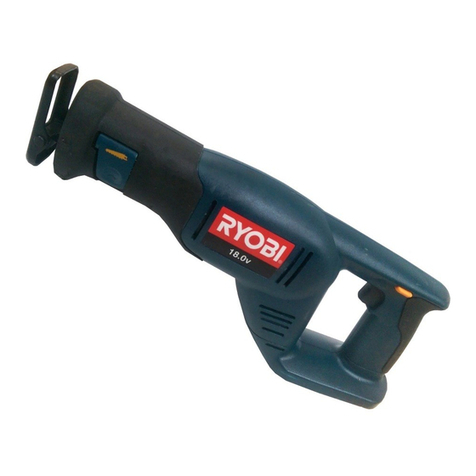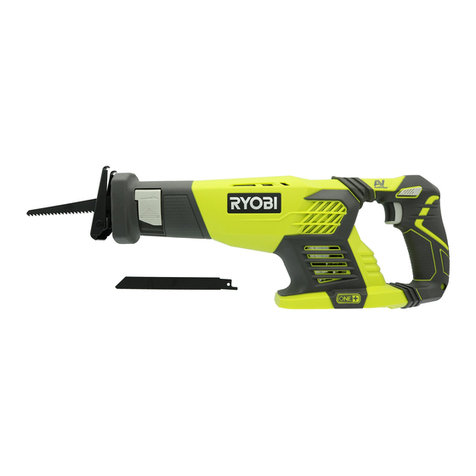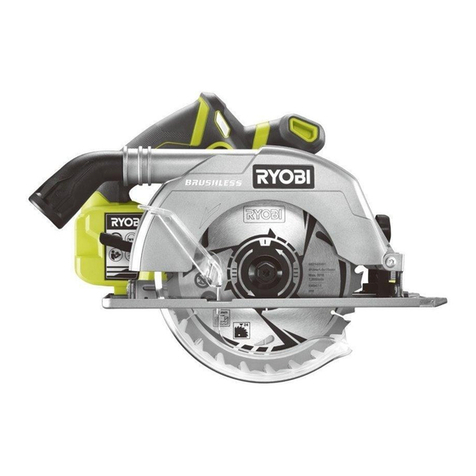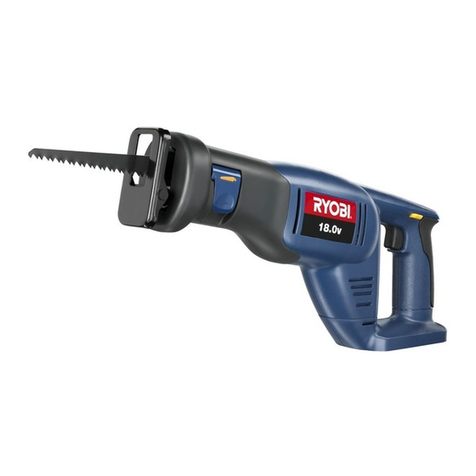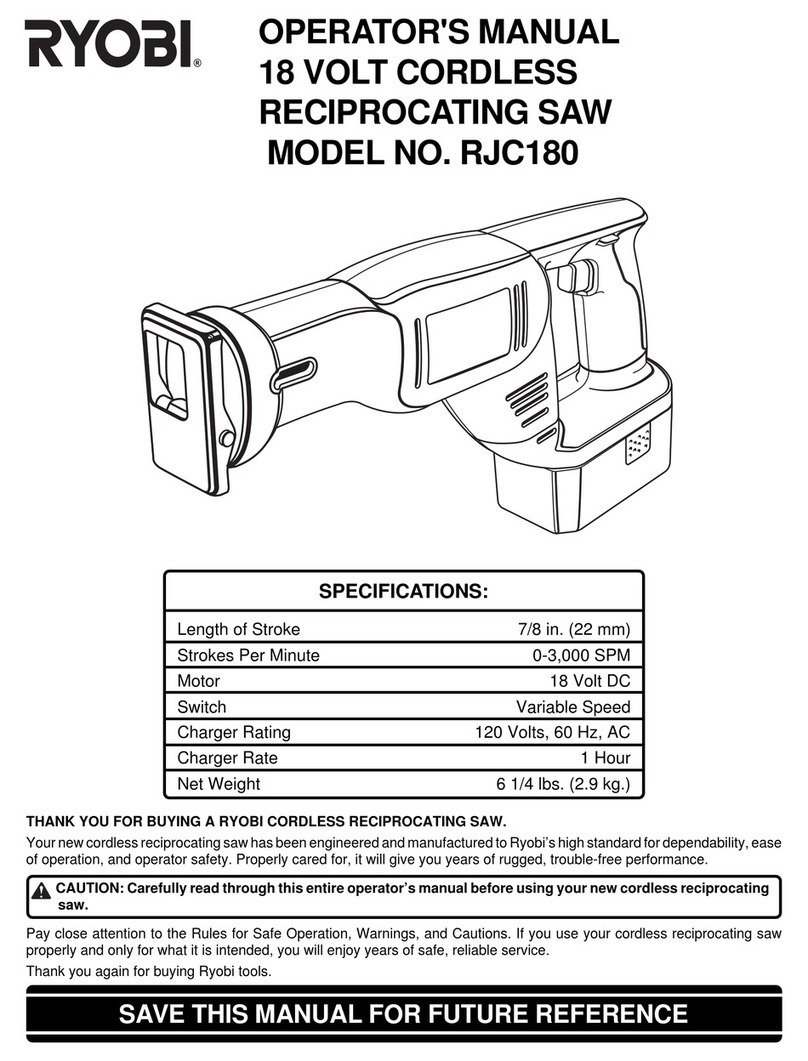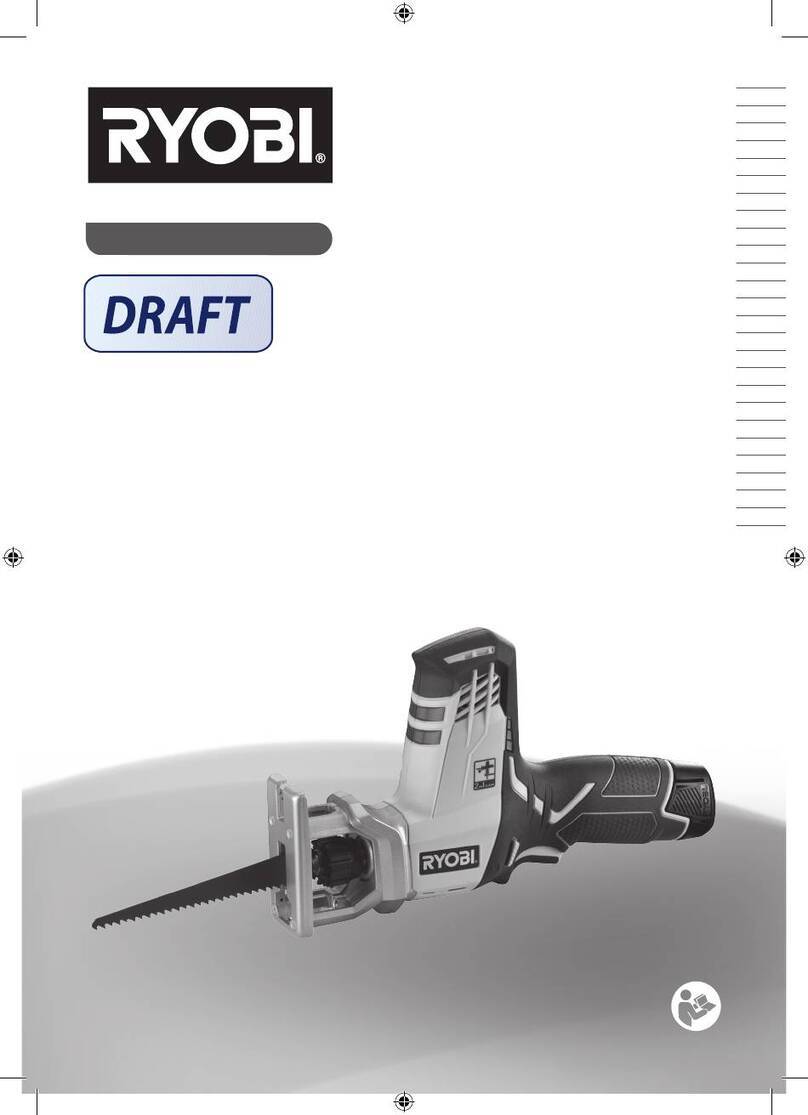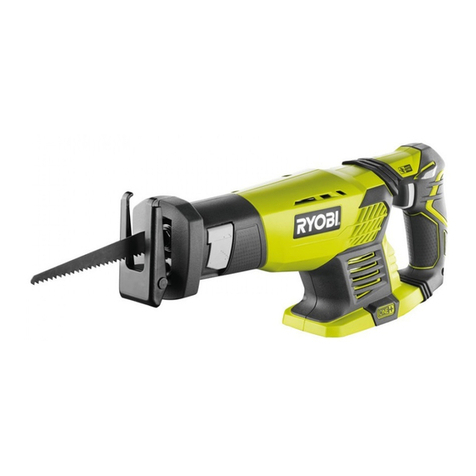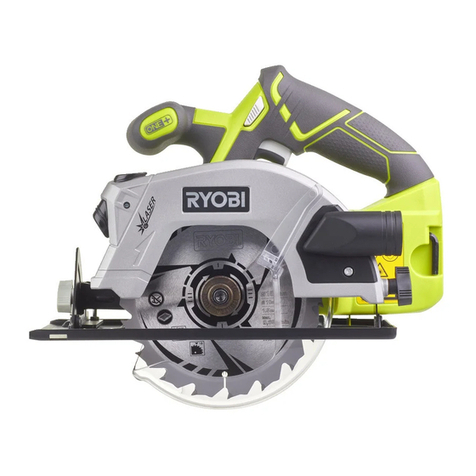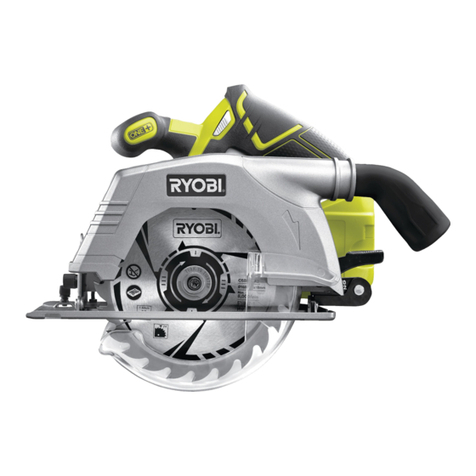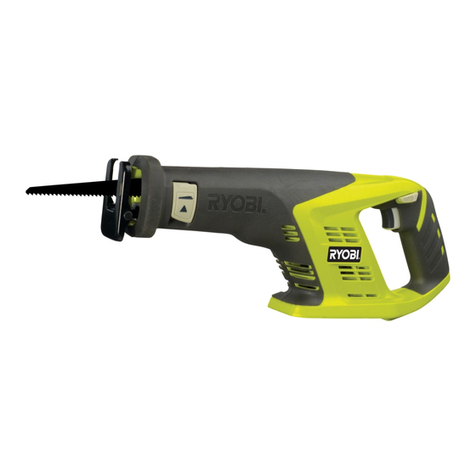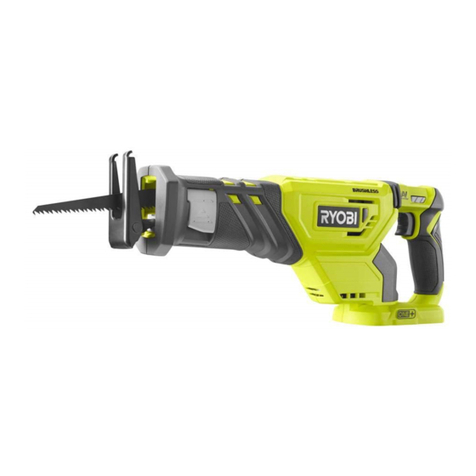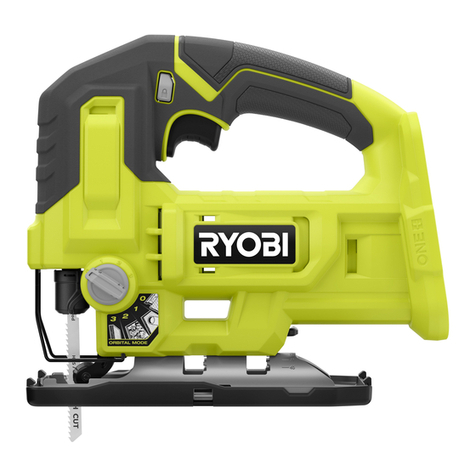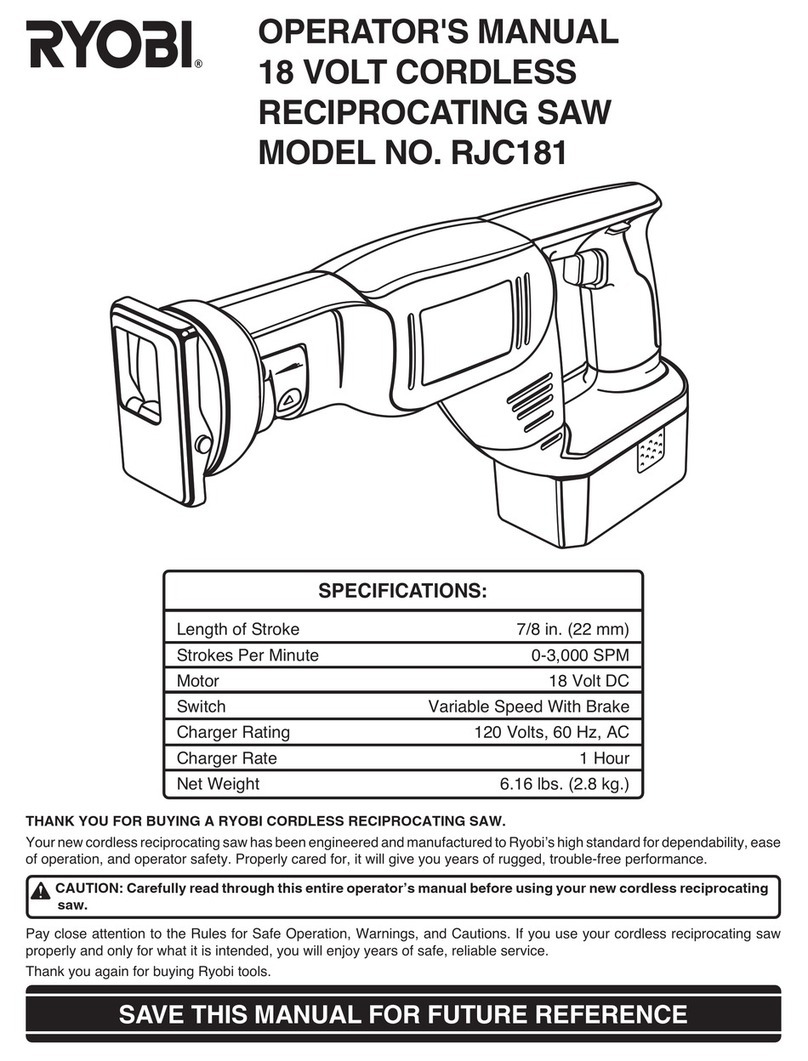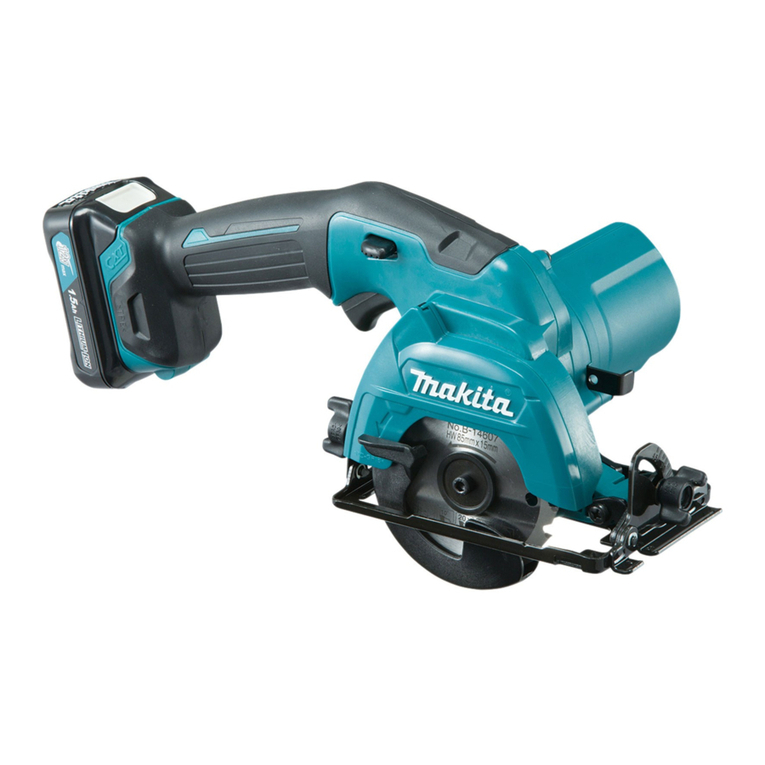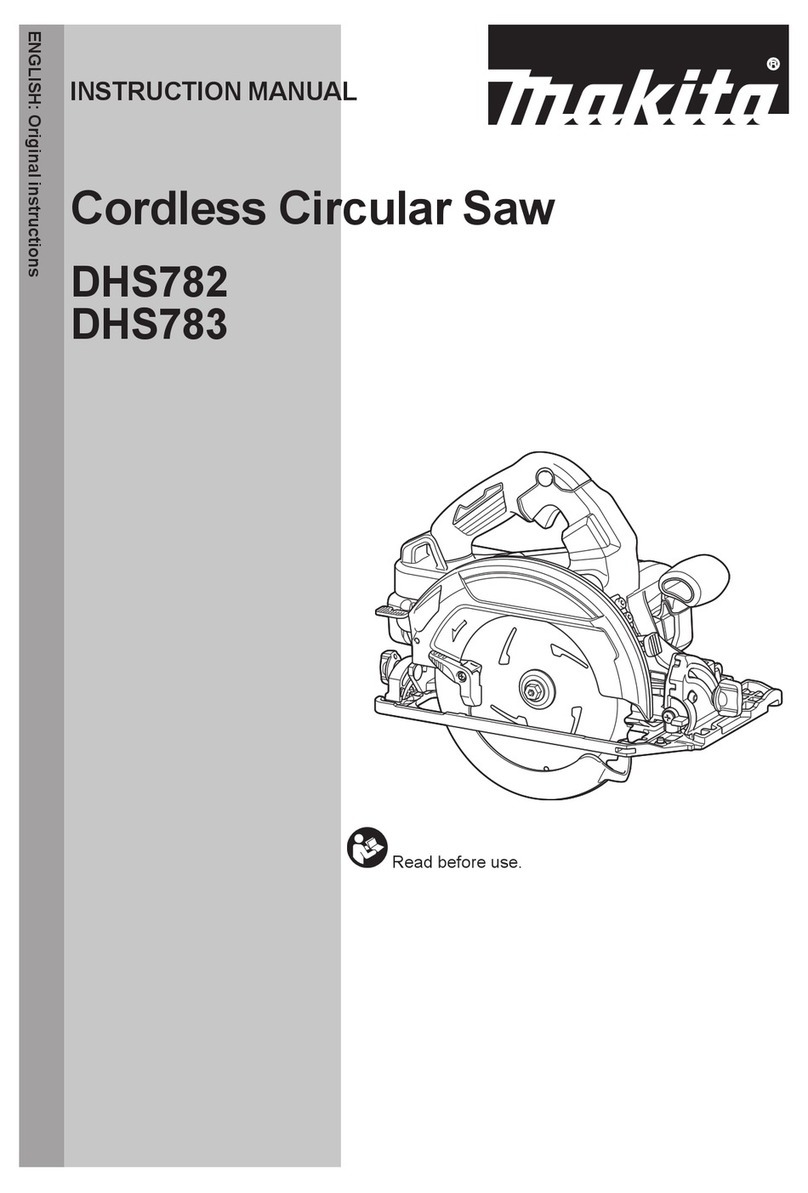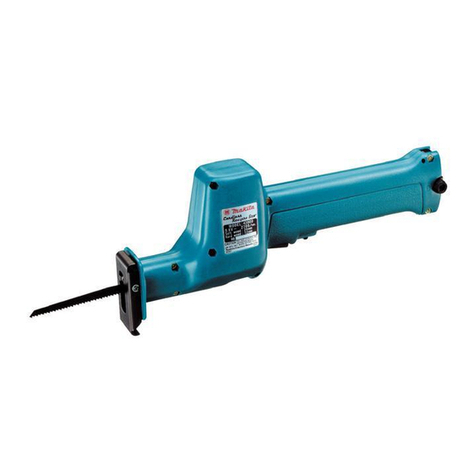
3
top surface of the wood causing the blade to climb out
of the kerf and jump back toward the operator.
Kickback is the result of saw misuse and/or incorrect
operating procedures or conditions and can be avoided by
taking proper precautions as given below.
■Maintain a firm grip with both hands on the saw
and position your arms to resist kickback forces.
Position your body to either side of the blade, but
not in line with the blade. Kickback could cause the
saw to jump backwards, but kickback forces can be
controlled by the operator, if proper precautions are
taken.
■When blade is binding, or when interrupting a cut
for any reason, release the trigger and hold the saw
motionless in the material until the blade comes
to a complete stop. Never attempt to remove the
saw from the work or pull the saw backward while
the blade is in motion or kickback may occur.
Investigate and take corrective actions to eliminate the
cause of blade binding.
■When restarting a saw in the workpiece, centre the
saw blade in the kerf so that the saw teeth are not
engaged into the material. If a saw blade binds, it may
walk up or kickback from the workpiece as the saw is
restarted.
■Support large panels to minimise the risk of blade
pinching and kickback. Large panels tend to sag
under their own weight. Supports must be placed under
the panel on both sides, near the line of cut and near
the edge of the panel.
■Do not use dull or damaged blades. Unsharpened
or improperly set blades produce narrow kerf causing
excessive friction, blade binding and kickback.
■Blade depth and bevel adjusting locking levers
must be tight and secure before making cut. If blade
adjustment shifts while cutting, it may cause binding
and kickback.
■Use extra caution when sawing into existing walls
or other blind areas. The protruding blade may cut
objects that can cause kickback.
GUARD FUNCTION
■Check the guard for proper closing before each
use. Do not operate the saw if guard does not move
freely and enclose the blade instantly. Never clamp
or tie the guard so that the blade is exposed. If saw
is accidentally dropped, guard may be bent. Check to
make sure that guard moves freely and does not touch
the blade or any other part, in all angles and depths
of cut.
■Check the operation and condition of the guard
return spring. If the guard and the spring are not
operating properly, they must be serviced before
use. Guard may operate sluggishly due to damaged
parts, gummy deposits, or a build-up of debris.
■Assure that the base plate of the saw will not shift
while performing the “plunge cut”. Blade shifting
sideways will cause binding and likely kick back.
■Always observe that the guard is covering the blade
before placing saw down on bench or floor. An
unprotected, coasting blade will cause the saw to walk
backwards, cutting whatever is in its path. Be aware
of the time it takes for the blade to stop after switch is
released.
SAFETY INSTRUCTIONS FOR ABRASIVE
CUTTING-OFF OPERATIONS
CUT-OFF MACHINE SAFETY WARNINGS
■The guard provided with the tool must be securely
attached to the power tool and positioned for
maximum safety, so the least amount of wheel is
exposed towards the operator. Position yourself
and bystanders away from the plane of the rotating
wheel. The guard helps to protect operator from broken
wheel fragments and accidental contact with wheel.
■Use only diamond cut-off wheels for your power
tool. Just because an accessory can be attached to
your power tool, it does not assure safe operation.
■The rated speed of the accessory must be at least
equal to the maximum speed marked on the power
tool. Accessories running faster than their rated speed
can break and fly apart.
■Wheels must be used only for recommended
applications. For example, do not grind with the
side of cut-off wheel. Abrasive cut-off wheels are
intended for peripheral grinding. Side forces applied to
these wheels may cause them to shatter.
■Always use undamaged wheel flanges that are of
correct diameter for your selected wheel. Proper
wheel flanges support the wheel, thus reducing the
possibility of wheel breakage.
■The outside diameter and the thickness of your
accessory must be within the capacity rating of
your power tool. Incorrectly sized accessories cannot
be adequately guarded or controlled.
■The arbour size of wheels and flanges must
properly fit the spindle of the power tool. Wheels
and flanges with arbour holes that do not match the
mounting hardware of the power tool will run out of
balance, vibrate excessively and may cause loss of
control.
■Do not use damaged wheels. Before each use,
inspect the wheels for chips and cracks. If power
tool or wheel is dropped, inspect for damage or
install an undamaged wheel. After inspecting
and installing the wheel, position yourself and
bystanders away from the plane of the rotating
wheel and run the power tool at maximum no load
speed for one minute. Damaged wheels will normally
break apart during this test time.
■Wear personal protective equipment. Depending
on application, use face shield, safety goggles or
safety glasses. As appropriate, wear dust mask,
hearing protectors, gloves and shop apron capable
of stopping small abrasive or workpiece fragments.
The eye protection must be capable of stopping flying
debris generated by various operations. The dust mask
or respirator must be capable of filtrating particles
generated by the operation. Prolonged exposure to

